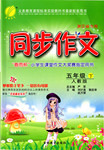题目内容
Please ______ that you have closed all the windows and turned off the lights before you leave the room
A. make sure B. be sure C. bring out D. hold up
A
解析:
be sure 有把握,确信;make sure 务必,一定,千万。

练习册系列答案
 春雨教育同步作文系列答案
春雨教育同步作文系列答案
相关题目
题目内容
Please ______ that you have closed all the windows and turned off the lights before you leave the room
A. make sure B. be sure C. bring out D. hold up
A
be sure 有把握,确信;make sure 务必,一定,千万。

 春雨教育同步作文系列答案
春雨教育同步作文系列答案